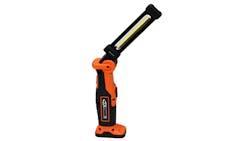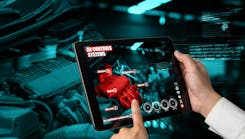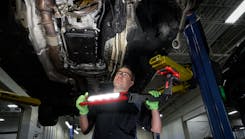5 features to consider when purchasing shop lighting
Lighting is usually not the first thought when it comes to outfitting an automotive shop—typically lifts, hand tools and diagnostic equipment come to mind, but lighting is actually very important for successfully and efficiently getting the job done.
When considering work lighting for your automotive shop, you want to purchase lights, both corded and battery-operated, that will be efficient and help you be successful on the job. When looking, it can be overwhelming when there’s so many different styles and features, and you need to figure out the right lights for the projects you’re working on.
As a technician, you work in multiple areas on a vehicle, whether it’s under the hood or under the car. All areas in a vehicle are unique work environments, which call for several different types of lighting options.
In this guide, we will cover the five features to consider when purchasing work lighting, and why they should be your top priority.
Lumens
The first feature you will want to look at is the lumens, or the brightness, of the light. Lumens can range from 200 to 600, with 500 being the “sweet spot.” Finding the lumens that are right for you will depend on what the task is. For example, if you’re replacing a transmission, you will want to ensure your work area is properly lit.
You don’t want to be blinded by a bright light on your work surface, but conversely, you don’t want a light that’s too dim and requires you to move closer to your work area. Ask yourself if you need to light up a large area or simply diagnose a quick problem under the hood.
Runtime/charge time
When working on a job, the last thing you want to happen is for your light to stop in the middle of the job. That’s why having a light that can run a long time and holds a good charge is key. If you are at a shop all day, you’ll want a light that will last a while. In most cases, you should be able to run a light at full power for three to four hours and at half power for six to seven hours.
Obviously, having a quicker recharge time is the best. Also purchase lights that provide a battery life indicator, which is a useful feature to extend battery lifetime and avoid unexpected situations with an empty battery.
Light pattern
Light pattern can easily be overlooked when purchasing work lights, but is actually very important.
The light pattern or the “throw” helps determine how far a light is going to project. Depending on the job, sometimes you will need more direct light and other times, you need light to surround an area.
A flood light will light up a large area, whereas a flashlight will be more of a tight beam lighting up a small spot. The “throw” of the light will have a beam angle that can range from four to 180 degrees. A wider-angle light won’t make the light more intense but will spread more evenly on your workspace. The ideal light pattern to have when working is between a 60 to 180 degree beam angle.
Functionality
Functionality is important when looking at all the benefits and features a light has to offer. Different functions to look for when purchasing lighting include magnets, hooks, water-resistance, oil-resistance, grease-resistance, and the flexibility to direct the light. With magnets, you can attach your light to the under portion of the car and keep your hands free.
A hook provides the ability to attach on a point of a car to illuminate the area you need to work on. Some lights are flexible or can rotate to give you the perfect direction of light. As a technician, you need to consider if you need the light to stand, be in your pocket, or hang from the hood. When it comes to functions of a light, you need to think about the projects you work on and your work environment.
Comfort
One of the most important features you will want to look at before purchasing work lights is comfort. If you’re purchasing a handheld light you’re going to be holding for hours, then you want to make sure you get one with a comfortable rubber grip. This will make your work more efficient and lead to ultimate comfort on your end. A neck light is a great example of a lightweight light that has an ergonomic design to be functional while making your neck comfortable.
When purchasing work lights, you must consider what will be the best for you and provide you with the best results. Better results will result in happier customers and make your life easier.
In our everyday lives, we take lighting for granted, but it’s a important aspect of our work area in the automotive industry. Lighting has a significant impact on the successful completion of tasks, and your performance on the job.
As a technician, it’s important to sit down and think about your lighting purchase, and how these five features can make a positive impact on your job.


